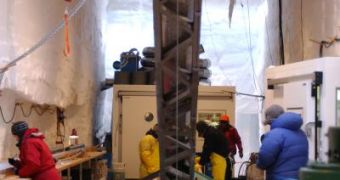There is no doubt in anyone's mind that we are currently in a warm Earth period. And we're not talking here about the climate change-type of warming, but of the planet's natural warming/cooling cycle. The current trend began some 11,700 years ago, and that is why Danish researchers looking into the history of melting ice in Greenland harvested ice samples all the way to that period from the island's ice sheets. In a paper published in the latest issue of the respected scientific journal Nature, experts at the University of Copenhagen Niels Bohr Institute describe the evolution of the ice spreads in great detail.
Drilling operations were conducted in the Greenland ice cap, but also in other ice spreads located on smaller islands around the larger one. Kilometers of samples were collected, and each annual layer was analyzed individually. This is the most accurate geological method of drawing conclusions about the planet's climate past. The ice that forms every year holds some of the properties that the climate of that time had. By analyzing them in a sequence, the investigators can tell how the climate modified over the years, and what caused the changes.
Experts at the Niels Bohr Institute Center for Ice and Climate, led by scientist Bo Vinther, worked together with colleagues from Canada, France, and the Russian Federation, on a new method of interpreting the data that they collected from the ice samples. “Ice cores from different drillings show different climate histories. This could be because they were drilled at very different places on and near Greenland, but it could also be due to changes in the elevation of the ice sheet, because the elevation itself causes different temperatures,” Vinther says of the team's new interpretation method.
Studies revealed that, just after the last ice age, the elevation of the sheets slightly rose, as evidenced by oxygen-18 isotope differences between the four locations at which samples were harvested. Most likely, the experts believe, the increase took place because, every time a cold cycle ended and a warm one began, the amount of precipitations falling on the ground increased significantly. Greenland's ice cap is now three kilometers thick at its largest point, and it thins out as it nears the sea. The new study offers a valuable framework for elaborating climate models that are more accurate with regard to historic facts.

 14 DAY TRIAL //
14 DAY TRIAL //